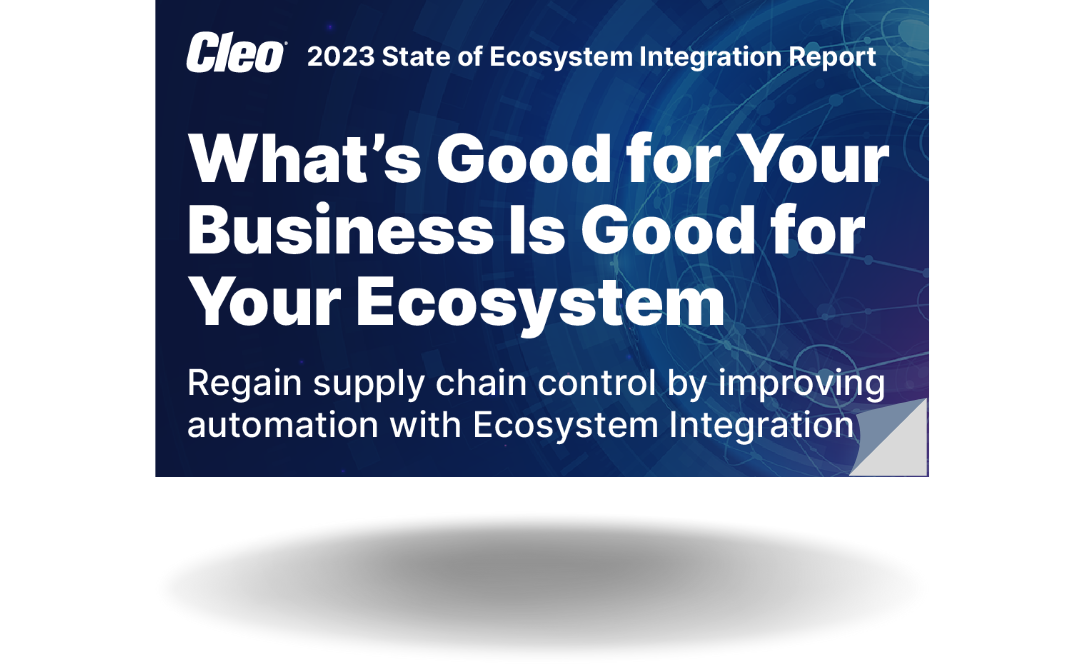7 Supply Chain Integration Challenges for 2024

For the fourth year in a row, we conducted a third-party survey involving more than 300 business and IT decision-makers across the US, Canada, and Europe, in the manufacturing, transportation and logistics, wholesale distribution, and retail industries.
We asked them how integration technology practices at their company are impacting business performance.
As always, the results were enlightening.
When analyzing the 2023 survey results, we identified seven critical integration challenges that companies have encountered and/or expect to encounter during the year ahead.
- Challenge #1: Supply Chain Disruptions Wreak Havoc on Business
- Challenge #2: Security Gets Tight
- Challenge #3: The Pitfalls of Traditional Integration Solutions
- Challenge #4: Application Integration Struggles Remain Top of Mind
- Challenge #5: Outdated Processes Hinder Growth and Efficiency
- Challenge #6: Partner Onboarding Takes Too Long
- Challenge #7: Poor Integration to Blame for Annual Revenue Losses
We dive into each one below. For a full breakdown of these challenges, how companies are taking control and responding to them, and the benefits of ecosystem integration, check out our 2023 State of Ecosystem Integration Report.
Challenge #1—Supply Chain Disruptions Wreak Havoc on Businesses
The first challenge companies are experiencing is that supply chain disruptions are devastating to businesses. We found that 49% of respondents said that supply chain disruptions are a threat to their business—tied for the top answer.
Not only do supply chain disruptions impact their business though, but it also impacts their trading partners' operations. And since trading partners will not receive their products and services on schedule, this means that their customers will not get their orders on time. Thus creating a domino effect where the entire supply chain is impacted and is very difficult to course correct.
Challenge #2—Security Gets Tight
The second challenge companies are experiencing pertains to EDI onboarding. 43% of respondents said that they have difficulty meeting EDI security requirements. This is a major issue because in order for two businesses to start trading and working together, all security requirements must be met. If they are not met, trading cannot occur, and therefore revenue cannot be earned.
Security requirements are constantly changing so companies need a solution that supports a wide range of requirements. Preferably one that is continuously updated to support evolving mandates.
Challenge #3—The Pitfalls of Traditional Integration Solutions
The third challenge companies are experiencing pertains to traditional integration software and open source software. Usage of traditional integration software dropped from 70% to 46% YoY. That's a stark 24% drop. As for open source software, usage dropped from 66% to 52% YoY, a 14% drop.
Historically, companies used these solutions because they appeared to be quick and easy options, but in the long run, they mount to more issues, costs, and headaches compared to modern, feature-rich integration platforms.
Challenge #4—Application Integration Struggles Remain Top of Mind
The fourth challenge companies are experiencing pertains to application integration. As more processes become digitized, companies are having to set up more B2B integrations with these new applications. In fact, on average, companies now possess 14 applications that require B2B integration support.
What's more, is that 27% of respondents are using multiple integration solutions. This is most likely because companies do not have one, all-encompassing solution that supports all their integration needs. Using multiple solutions leaves companies more vulnerable to errors, integration complexities, and unaccounted-for expenses.
Challenge #5—Outdated Processes Hinder Growth and Efficiency
The sixth challenge companies are experiencing pertains to outdated processes and legacy solutions. When asked about their biggest integration challenges, 29% said legacy solutions, 28% said legacy applications, and 26% said reliance on manual processes.
Legacy solutions and applications are the antitheses of efficiency and scaling. This is because they are more difficult to operate and maintain, much more susceptible to downtime, and lack modern, innovative integration features.
At the same time, manual processes hinder growth and efficiency as well because humans operate much slower and are more prone to making errors, compared to modern integration automation software.
Challenge #6—Partner Onboarding Takes Too Long
The sixth challenge companies are experiencing pertains to long partner onboarding times. 44% of respondents said it takes between one week and one month to onboard a new trading partner, while 16% said it takes more than one month.
These numbers are concerning because every additional day it takes to onboard a new trading partner is another day of missed revenue—since two companies cannot begin trading until onboarding is complete. The faster companies can onboard trading partners, the quicker they can start earning money.
Challenge #7—Poor Integration Is to Blame for Annual Revenue Losses
The seventh challenge companies are experiencing pertains to poor integration cutting into annual revenue. When asked how much annual revenue their organizations lose annually due to poor integrations, 26% said more than $500K, and 24% said between $250K-$500K. So 50% of companies are losing at least 250K per year on poor integration.
Not only does poor integration impact revenue, but it also impacts an organization's relationships with trading partners. This is because poor integration leads to supply chain disruptions which tend to end up impacting trading partners' businesses as well. Therefore, souring relationships and leading to expensive fines.
To learn more about these findings and others, along with solutions to these challenges, check out the full report below.
 Access 2023 Ecosystem Integration Report
Access 2023 Ecosystem Integration Report
With companies facing a variety of different operational challenges, control over supply chains and integrations is crucial for minimizing disruptions. A well-integrated digital ecosystem provides companies with the agility, visibility, and control to make changes across all connected platforms with minimal time or effort. Regain control of your business today with Cleo Integration Cloud.
To learn more about what was covered in this blog, be sure to read our 2023 State of Ecosystem Integration Report for a full breakdown of our findings, while also learning how your company can regain control of its supply chain by improving automation with ecosystem integration.
If you have questions about what was covered in this blog, EDI, or Cleo's products and services, contact us at sales@cleo.com or +1.815.282.7695. Lastly, explore some of our educational resources through our content hub.

About Cleo
